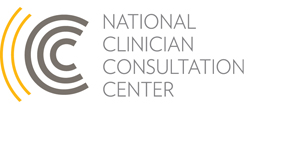Case of the Month: Needlestick PEP in a Correctional Setting
Case Summary
A physician calls about a correctional officer who stuck himself with a sewing needle while going through an inmate’s personal belongings. His finger had a shallow injury and there was no visible blood on the needle. The officer is immunized against HBV but does not know if he responded. The source person is unknown and therefore the HIV status is not known. The incident occurred one hour prior to physician consultation, but it is unclear when the needle had last been used. The calling physician would like to know the overall management protocol in this potential exposure situation.
CCC Consultant Advice
The consulting clinician suggests that PEP is not recommended in this situation because the risks of administering HIV post-exposure prophylaxis (PEP) likely outweigh the benefits. There are multiple factors that inform this recommendation:
- There has never been a documented HIV transmission from a needle injury in a non-healthcare setting.
- There have only been two documented cases from found needles, both of which occurred in hospital settings.
- Because sewing needles in the correctional setting could be used as tattooing implements, it is reasonable to consider an injury from one might entail some risk. Even given the minimal chance that there were traces of HIV on this needle, however, its infectious ability outside of the human body is exceedingly low. This is because the virus likely dies or degrades rapidly once outside of the body.
- Solid bore needles such as sewing needles are associated with a lower risk of HIV transmission than hollow bore needles.
The clinician consultant suggests that the caller obtain baseline tests for the patient, including an HIV antibody test, hepatitis B surface antibody (HBsAb) test, and a hepatitis C (HCV) antibody test. The clinician performing follow-up for the police officer should perform surveillance testing for HIV antibodies at 6, 12, and 24 weeks. For hepatitis B, if the HBsAb titer is greater than 10mIU/mL, then the exposed person has seroprotection, and no further action is necessary. If the HBsAb titer is less than 10 mIU/mL, the exposed person should receive a second three-dose round of the HBV vaccine series. Per updated CDC recommendations, if the officer has an inadequate HBsAb titer, he should also receive one dose of HBIG. For HCV, the caller should obtain HCV antibody tests at 12 and 24 weeks.
Because CCC consultations are based on information provided by the caller or clinician accessing the online consultation center, without the benefit of a direct evaluation or examination of the patient, consultations are intended to be used as a guide. They do not constitute medical advice and are not to serve as a substitute for medical judgment. This Case of the Month includes consultation based on the most up-to-date evidence at the time of its publication. To learn about current recommendations, please call one of our clinical consultation lines.
 University of California, San Francisco |
University of California, San Francisco |
